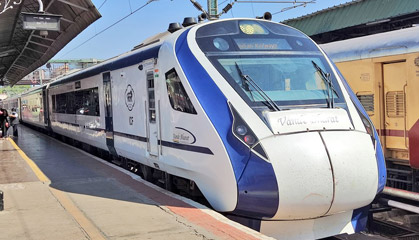
When a passenger’s ticket status shows “WL” followed by a number, this indicates that their ticket is on a waiting list. This status means that the ticket will only be confirmed if enough passengers who booked before them for the same journey cancel their tickets. For instance, if the status reads “GNWL 23 / WL 16,” it means the passenger is currently 16th in line on the waitlist. Their ticket will be confirmed only if 16 people who booked earlier cancel. If the status changes to “GNWL/AVAILABLE,” it implies the ticket is now confirmed because some cancellations have taken place. However, if the ticket remains waitlisted even after the final chart is prepared, no berth will be assigned to the passenger. In such cases, especially with e-tickets, the booking is automatically canceled, and the fare is refunded to the passenger’s account. Passengers with entirely waitlisted e-tickets should not board the train, but if even one passenger on the ticket has RAC or confirmed status, the ticket is not automatically canceled, and boarding is permitted.
Types of Waiting Lists
General Waiting List (GNWL): This is the most common waitlist type and applies when a passenger’s journey begins at the train’s originating station or a station near it. Tickets on the GNWL usually have the best chance of confirmation, as the majority of seats are reserved from the starting point, leading to frequent cancellations.
Remote Location Waiting List (RLWL): This type is for passengers beginning their journey from major stations along the train’s route. Each designated remote location station has a fixed number of reserved seats. The chances of RLWL tickets getting confirmed are typically lower, as they depend on cancellations at that particular station. Remote stations usually finalize their charts 2-4 hours before the train departs.
Remote Location General Waiting List (RLGN): This is essentially the same as RLWL. Tickets booked under the RLWL quota may also be marked as RLGN.
Pooled Quota Waiting List (PQWL): Assigned when passengers start from the source or an intermediate station but end their journey before the train’s final destination, the pooled quota is shared across smaller stations along the route. PQWL tickets usually have lower confirmation chances due to limited cancellations.
Roadside Station Waiting List (RSWL): RSWL applies when bookings are made from the train’s starting station to nearby roadside stations, using specific seats reserved for this purpose. These have limited confirmation chances.
Request Waiting List (RQWL): When a passenger books a ticket from one intermediate station to another, outside the usual general, remote, or pooled quotas, they are placed on the RQWL. These tickets can only be confirmed if a passenger from the starting station to that intermediate station cancels their booking.
Tatkal Waiting List (TQWL): If Tatkal (short-notice) tickets are fully booked, new requests are placed on the TQWL. Unlike other quotas, Tatkal bookings skip the RAC status and go straight to waiting or confirmation. During chart preparation, GNWL is prioritized over TQWL, so Tatkal waitlist confirmations are less frequent.
Special Quotas and Their Waiting Lists
Apart from the above types, there are additional quotas for specific passenger groups, such as Out Station (OS) for ticket agencies, Head Office (HO) for railway officials, Defence (DF) for military personnel, Foreign Tourist (FT), Ladies (LD/LQ), and Emergency Quota (EQ) for urgent travel needs. Each of these may also have its own waitlist designation, such as FTWL for foreign tourists or DPWL for railway employees.
Reservation Against Cancellation (RAC): A ticket with RAC status has a high chance of confirmation by the time the chart is prepared. If the ticket remains in RAC, the passenger is given a half-berth, which they share with another RAC passenger on a side-lower berth. These seats are marked with an “R” prefix, indicating their RAC status. The TTE (Train Ticket Examiner) will reassign berths freed up after cancellations to RAC passengers.
Confirmed (CNF): A confirmed status means the passenger has a guaranteed full berth. However, in First AC (1A), berth details may not appear immediately and are often assigned manually by the TTE during chart preparation.

Leave a Reply